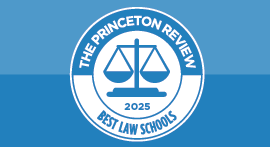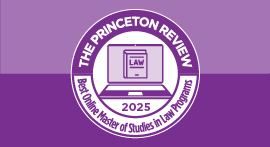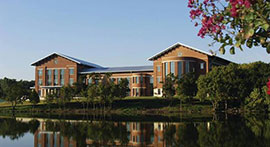Overview
Test Scores
(enrolled students)
Deadlines
Application Process
Other Admission Factors
LSAT Score
Undergraduate GPA
Letters of Recommendation
Essay / Personal Statement
Selectivity Rating
Faculty Information
Students Say
Seven professional schools all share the same campus in Baltimore, which can over-burden some of the administrative offices; students cite the financial aid office’s lag time, and a career development office that “generally lacks important contacts in the work field.” Still, the school boasts an active recruiting program and a high job placement rate, while the main head honchos at the school are very accessible, and “many of the deans also teach classes and are available to all students, even if you don’t have them as a professor.” The school’s great strength is “teaching you how to be a smart and effective lawyer,” through a few students say there is relatively little class time devoted to “cutting-edge legal scholarship and critical theory,” and complain that “the popular courses are filled so quickly.”
Maryland professors are “top-notch,” being both “incredibly smart legal thinkers and, more importantly, fantastic teachers in the classroom.” Nearly all of the professors “have practiced law for a decade or more before coming to the law school,” which not only contributes to their legal experience, but to their sympathy for the demands of the profession. Professors and staff are all “very accommodating” to students trying to get through law school while working—night classes are made available to students in their second and third years—and faculty are “very helpful in advising students on how to mitigate stress and handle the competing interests of law school.” “I have had a number of brilliant and committed adjunct professors who understand the burdens associated with working and going to school full-time,” says a student. “Even if you are not in their class, they help you with course-related questions, study skills, and exam strategies,” says another.
Career overview
Career Services
Graduates Employed by Area
Graduates Employed by Region
Prominent Alumni
Dates
Financial Aid Statistics
Expenses per Academic Year
Student Body Profile
Demographics
Campus Life
Students Say
While the law school itself is “beautiful,” and “new and gorgeous with all the technical bells and whistles,” the location of the law school is “truly the worst…although that is not really the school’s fault.” “Baltimore is an impressive city in many respects, but the campus is not located in one of the city’s many pleasant neighborhoods,” says a student of the surrounding area, where “things around school shut down as soon as it is dark.” There is “no need to go out and buy a Kevlar vest or anything,” but “just be sure to do your research, and if you have a chance to, come look around before signing a lease—I would advise that.” Students who live on campus are often disappointed with restaurant and nightlife options, and some students feel that finding entertainment “is difficult if you don’t own a car,” as the social life at the school struggles “because many students commute…and this damages the sense of community.” On-campus activities tend to be based on legal issues and career-building, rather than pure socialization, though law students can take advantage of the gym, pool, and student lounge at the brand new campus center.
The law school curve does incite a bit of competition among students, which is more “collaborative” than cutthroat, but it still creates an atmosphere “with enough competition to encourage a race to the top.” “Although we all compete against each other, I do not think that anyone at this law school would sabotage another student in anyway,” says one, and everyone seems to agree.
More Information
Admissions Office Contact
Associate Dean for Admissions
Baltimore, MD 21201



